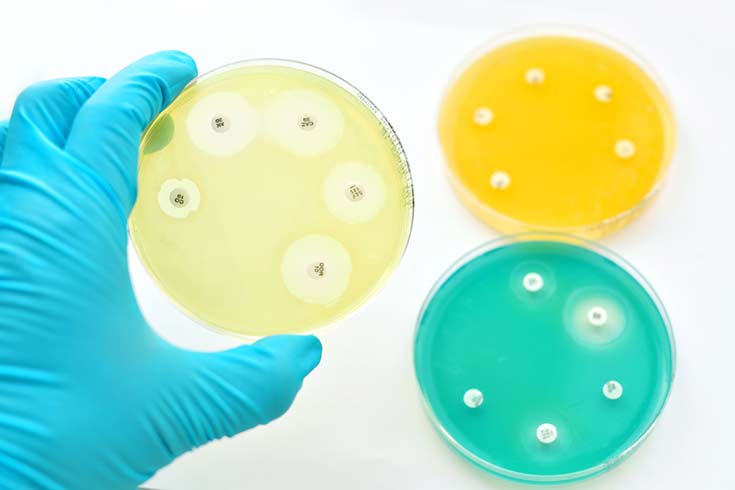Researchers find antibiotic resistant bacteria after sewage spills
University of South Florida researchers investigating the aftermath of a September 2014 sewer line break in St Petersburg, Florida, have found dangerous antibiotic-resistant bacteria in the untreated wastewater that gushed into neighbourhoods and into Boca Ciega Bay at a rate of 250 to 500 gallons per minute.

Testing for antimicrobial susceptibility. This subject will be covered in the next issue of CRJ, 12:1, published in September 2016 ( Jarun Ontakrai/123rf)
Their findings, just published in Applied and Environmental Microbiology raise several significant public health concerns.
First, a strain of bacteria found in the water tested resistant to vancomycin, an antibiotic considered to be a ‘last resort’ treatment for serious infections that do not respond to other antibiotics. Second, the combination of aging sewer infrastructure and an increase in storm water flooding with extreme rain events, increases the likelihood of more spills occurring and continuing to spread these dangerous, drug-resistant bacteria in populated areas. Finally, the researchers found that the vancomycin-resistant enterococci (VRE) bacteria found in the untreated wastewater contain a gene capable of transferring vancomycin resistance to other strains of bacteria. This fuels the greater problem of increasing antibiotic resistance among other kinds of bacteria.
The researchers sampled the water and soil for seven weeks following the spill from the broken sewer line that totalled about 500,000 gallons of released untreated sewage. Genes from the vancomycin-resistant bacteria were detected for nearly two weeks following the spill.
"While we have known that raw sewage contains many disease-causing bacteria, this experience tells us that sewage and faecal pollution also carry vancomycin-resistant bacteria," said Dr Valerie Harwood, a professor in the USF Department of Integrative Biology and study co-author. "Most VRE are confined to hospitals, but detecting them in waters of the Tampa Bay community is quite concerning. People need to be aware of what may be entering the water after heavy rains, accidental spills, or after intentional sewage releases."
According to study lead author, USF PhD student Suzanne Young, their finding is also a public health "wake-up call" to be more prudent with the use of antibiotics in both humans and animals.
"The more antibiotics we use – in both humans and animals – the more the antibiotic resistant organisms and antibiotic resistance genes can enter the environment and contribute to the spread of antibiotic resistance, especially for those drugs considered the last resort for many infections," explained Young. "Also, we need to invest in more sustainable infrastructure for managing storm water and wastewater to decrease the frequency of sewage spills."
The researchers also called for more monitoring of VRE and the presence of resistance genes outside of the hospital setting where they are more commonly found.
According to the authors, the bacteria they discovered in the sewage spill waters – VRE – are on the US Center for Disease Control's list of serious threats.
United Nations high-level meeting on antimicrobial resistance
In September 2016, the United Nations will be holding a high-level meeting on antimicrobial resistance in New York. Antimicrobial resistance (AMR) has become one of the biggest threats to global health and endangers other major priorities, such as human development. All around the world, many common infections are becoming resistant to the antimicrobial medicines used to treat them, resulting in longer illnesses and more deaths. At the same time, not enough new antimicrobial drugs, especially antibiotics, are being developed to replace older and increasingly ineffective ones.
Global leaders will meet at the United Nations General Assembly in New York in September 2016 to commit to fighting antimicrobial resistance together. This is only the fourth time in the history of the UN that a health topic will be discussed at the General Assembly (the others being HIV, non-communicable diseases and Ebola). Heads of State and Heads of Delegations are expected to address the seriousness and scope of the situation and to agree on sustainable, multi-sectoral approaches to addressing antimicrobial resistance.
The next issue of CRJ (12:1) will feature articles on antimicrobial resistance and its implications for global health and frontline response agencies.